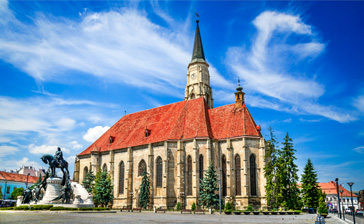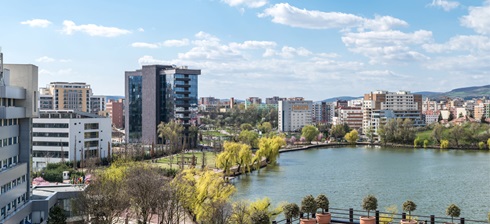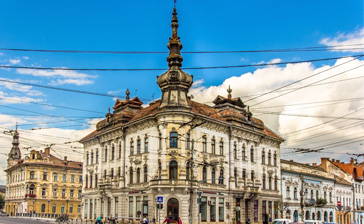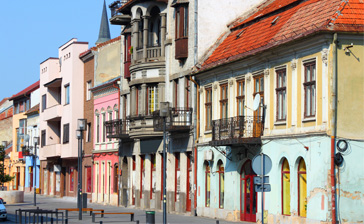
Book a Flight to Cluj-Napoca
expand_more
1 Passenger, Economy
expand_morePromotional Code
expand_moreexpand_more
today
today
To book tickets for children traveling alone click here
Find the lowest fares to Cluj-Napoca
flight_takeoff
flight_land
€
There are no fares that match your filter criteria. Please adjust your filters.
There are no fares that match your filter criteria. Please adjust your filters.*Fares displayed have been collected within the last 48hrs and may no longer be available at time of booking. Additional fees and charges for optional products and services may apply.
AEGEAN popular flights to Cluj-Napoca
flight_takeoff
flight_land
€
Cabin Class option undefined Selectedkeyboard_arrow_down
Select Travel Class
There are no fares that match your filter criteria. Please adjust your filters.
There are no fares that match your filter criteria. Please adjust your filters.*Fares displayed have been collected within the last 48hrs and may no longer be available at time of booking. Additional fees and charges for optional products and services may apply.

Plan your Trip to Cluj-Napoca
Travel with Aegean Airlines to enigmatic Cluj, Romania’s second-largest city, with a nostalgic atmosphere and a distinct cultural identity, in the shadow of the legend of Count Dracula.
Built in the valley of the Someșul Mic River, the unofficial capital of the historic region of Transylvania is a place with a long and enchanting history. This is a land of encounters, of ancient tribes with Roman rulers, Hungarian kings with Serbian revolutionaries, heretical religious orders with legendary vampires, medieval towers with the eclectic examples of Baroque and Art Nouveau. From the ramparts of the Tailors’ Bastion to the architectural feast of the central Unirii Square and from the grand alleys of the green Central Park to the stylish hangouts of the university district, you will discover a city with an authentic personality and a myriad of unexplored treasures.
Book your tickets and discover the European Youth Capital 2015 from up close, a dynamic university town that has a passion for dark mystery stories, music festivals and a vibrant nightlife.

St Michael’s Church: Built in the 14th and 15th centuries, the second largest Gothic church in Romania is a monumental work of architecture that towers over the central square of Cluj. The impressive neo-Gothic belfry, a 19th-century addition, is the tallest in Transylvania (80 metres). Among the wonderful decorations inside are the stone veins of the domed roof, the Baroque pulpit and the fragments of Renaissance frescoes.
Address: Piața Unirii, Cluj-Napoca
National Museum of Transylvanian History: Housed in a wonderful neoclassical building from the 19th century, this museum tells the story of the historical evolution of Transylvania’s culture, from the prehistoric era to the early 20th century. The eclectic collection includes thousands of finds from the archaeological sites of the region: Egyptian mummies and weapons of the ancient Dacians, medieval tools and pottery, household items, jewellery and much more.
Address: Strada Constantin Daicoviciu, Cluj-Napoca, www.museum.utcluj.ro
The Pharmacy History Collection: The city’s most amazing museum is housed in the atmospheric rooms of the oldest pharmacy in Cluj, dating back to 1573 and known as the Hintz Pharmacy. Its fantastic collection contains over 1,800 pieces and antiques used by pharmacists: from glass retorts and special jars for preserving substances to measuring tools and prescriptions for preparing treatments. Keep an eye out of the set of bottles with unbelievable elixirs for every possible ailment, such as the “elixir of love...”
Address: Piața Unirii 28, 400098 Cluj-Napoca, www.muzeulfarmaciei.ro
National Art Museum: An impressive collection of Romanian art, with major works of painting and sculpture is today housed in the Banffy Palace, an exceptional Baroque building. Visit the museum to admire the work of important Romanian artists, such as Nicolae Grigorescu, Theodor Aman, Pallady and others. The temporary exhibitions of contemporary art are particularly interesting.
Address: Piața Unirii 30, 400098 Cluj-Napoca, www.macluj.ro
Hajongard Cemetery: Known as the Pantheon of Transylvania, the grandiose city cemetery was established in the 16th century and is one of the oldest in Europe. Its elegant graves and impressive mausoleums are the resting places of the crème de la crème of Transylvanian art and thought over the centuries, alongside members of Romania’s aristocratic families.
Address: Strada Matei Basarab, Cluj-Napoca
Alexandru Borza Botanical Garden: Spread out over a huge area in between the buildings of the university campus, the botanic gardens of Cluj offer a wonderful lesson in phytogeography as well as being an oasis of calm within a particularly elegant environment. Founded in 1872, the gardens today contain over 10,000 plant species from all over the world. Don’t miss the Roman Garden, with the magnificent statue of the goddess Demeter (Ceres) and scattered archaeological remains from pre-Roman Napoca. Take a tour of the Japanese Garden with the beautiful Asian kiosks. Stroll through the 6 glass greenhouses with the large number of tropical and subtropical plants. You mustn’t leave without having visited the Botanical Museum, with its thousands of vegetal curios.
Address: Strada Republicii 42, 400015 Cluj-Napoca, www.ubbcluj.ro/en/structura/sport/gradina_botanica
The Transylvanian Museum of Ethnography: Since 1922, this amazing museum has been a treasure house of the authentic traditions and folk culture of Transylvania. Its impressive collections include over 65,000 exhibits, divided into different thematic areas: from trade, the household and food, to costumes and traditional customs.
Address: Memorandumului St 21, 400000 Cluj-Napoca, www.muzeul-etnografic.ro/en
“Romulus Vuia” National Ethnographic Park: Located on the outskirts of Cluj, just 5 km from the historic centre, this impressive open-air museum offers a historical journey through the peasant culture of Romania, with architecture as its guide. Visit it to view authentic reconstructions of traditional houses, churches, handicrafts workshops and other folk buildings. Don’t miss the Cizer-Salaj church, one of the most beautiful wooden churches in Transylvania and one of the park’s oldest exhibits, dating back to 1648.
Address: Aleea Muzeului Etnografic, www.muzeul-etnografic.ro/en

Stroll through the Old Town and do your shopping at the stores along Eroilor Avenue and in the streets around central Unirii Square. Hunt down the small specialist shops in the area around Mihai Viteazu Square. Explore the fashionable boutiques dotted around the youthful university district. For cheap purchases, make your way to the shops around Mărăști Square.
You can buy exceptional leather goods and accessories at very good prices, and local handicrafts (from jewellery and embroideries to handmade carpets and pottery). Don’t forget that you’re in the realm of Count Dracula, and souvenirs featuring his legend are a must. Walk by the stalls of the daily food market in Viteazu Square and buy handmade delicacies from local producers. In the Polus Centre (Strada Avram Iancu) and Iulius Mall (Strada Alexandru Vaida Voevod) shopping malls, with over 210 shops, you will find all the international brands and large clothing chains, as well as a wide range of entertainment options.

Typical Romanian flavours with a particular Transylvanian touch, strongly influenced by Hungarian tradition and Italian cooking, cuisines from all over the world and a great love of sushi make up Cluj’s cosmopolitan gastronomic identity.
You must try the wonderful local products, such as the famous ceps mushrooms from the Transylvanian forests, varză a la Cluj (a type of soufflé made with sauerkraut and pancetta), mamaliga cu smantana (polenta with sour cream), delicious sausages and a huge range of goulashes, washed down with a local wine.
Take a seat at one of the open-air cafes in Piața Muzeului for a strong espresso and sweet delights, such as gogoși (sugared donuts) or papanași (fried dough balls filled with soft cheese and covered with various types of sour jam). Grab a covrigi (the Romanian pretzel), one of the favourite snacks of the locals.
However you choose to spend your day, keep your strengths up so you can enjoy Cluj’s famous nightlife. The city’s large student population shows the way to the packed bars to the south of the historic centre in the university district as well as to the countless bars around Unirii and Muzeului Squares. Here you can find everything, from atmospheric cellars and elegant jazz clubs to live music venues and dance clubs, in a city where after-hours entertainment is an institution.

- Transylvania International Film Festival: The country’s most important film festival and guardian of the New Romanian Cinema. For ten days in early June, Cluj lives to the rhythm of the seventh art, through the works of new directors from Romania and abroad, retrospectives, masterclasses, the bright presence of many international stars and parties that last until the early hours.
- Cluj Musical Autumn: The country’s longest-running classical music festival, with a history that begins in 1965. For two months (September-October) symphonic orchestras, choirs, chamber music ensembles and leading soloists fill the major stages and monuments of the city with their melodies. Each year the programme is dedicated to a different classical composer as well as to works of contemporary music.
- Jazz in the Park: The largest festival of jazz and soul music in Romania is a big party of music and nature on the grass of Cluj’s central park. Multiple stages, contemporary art exhibitions, food and endless lounging in hammocks create a wonderful atmosphere in the last week of June.
- Untold Festival: The absolute electronic dance music festival takes place in Cluj Arena and the city’s central park on the first weekend of August. Come to hear top international DJs along with 300,000 other visitors from all over the planet.

Getting to the city
Aegean Airlines lands at Cluj Avram Iancu International Airport, the second largest airport in Romania. Here you will find duty-free shops, shops selling clothes and accessories, many boutiques selling local handicrafts and traditional Romanian products, as well as religious items. The airport also has a bank, a foreign exchange office, ATMs, a post office, cafes, bars and a restaurant. For internet access, visit the business lounge in the departures area.
The airport is located in the region of Someșeni, 9 km to the east of Cluj-Napoca. To reach the city centre you can take either a bus or a taxi. Buses 8 and 5 are operated by the local public transport company and connect the airport to the city centre daily. The journey time is approximately 30 minutes and buses run every 10 minutes on weekdays and every 20 minutes at weekends.

St Michael’s Church: Built in the 14th and 15th centuries, the second largest Gothic church in Romania is a monumental work of architecture that towers over the central square of Cluj. The impressive neo-Gothic belfry, a 19th-century addition, is the tallest in Transylvania (80 metres). Among the wonderful decorations inside are the stone veins of the domed roof, the Baroque pulpit and the fragments of Renaissance frescoes.
Address: Piața Unirii, Cluj-Napoca
National Museum of Transylvanian History: Housed in a wonderful neoclassical building from the 19th century, this museum tells the story of the historical evolution of Transylvania’s culture, from the prehistoric era to the early 20th century. The eclectic collection includes thousands of finds from the archaeological sites of the region: Egyptian mummies and weapons of the ancient Dacians, medieval tools and pottery, household items, jewellery and much more.
Address: Strada Constantin Daicoviciu, Cluj-Napoca, www.museum.utcluj.ro
The Pharmacy History Collection: The city’s most amazing museum is housed in the atmospheric rooms of the oldest pharmacy in Cluj, dating back to 1573 and known as the Hintz Pharmacy. Its fantastic collection contains over 1,800 pieces and antiques used by pharmacists: from glass retorts and special jars for preserving substances to measuring tools and prescriptions for preparing treatments. Keep an eye out of the set of bottles with unbelievable elixirs for every possible ailment, such as the “elixir of love...”
Address: Piața Unirii 28, 400098 Cluj-Napoca, www.muzeulfarmaciei.ro
National Art Museum: An impressive collection of Romanian art, with major works of painting and sculpture is today housed in the Banffy Palace, an exceptional Baroque building. Visit the museum to admire the work of important Romanian artists, such as Nicolae Grigorescu, Theodor Aman, Pallady and others. The temporary exhibitions of contemporary art are particularly interesting.
Address: Piața Unirii 30, 400098 Cluj-Napoca, www.macluj.ro
Hajongard Cemetery: Known as the Pantheon of Transylvania, the grandiose city cemetery was established in the 16th century and is one of the oldest in Europe. Its elegant graves and impressive mausoleums are the resting places of the crème de la crème of Transylvanian art and thought over the centuries, alongside members of Romania’s aristocratic families.
Address: Strada Matei Basarab, Cluj-Napoca
Alexandru Borza Botanical Garden: Spread out over a huge area in between the buildings of the university campus, the botanic gardens of Cluj offer a wonderful lesson in phytogeography as well as being an oasis of calm within a particularly elegant environment. Founded in 1872, the gardens today contain over 10,000 plant species from all over the world. Don’t miss the Roman Garden, with the magnificent statue of the goddess Demeter (Ceres) and scattered archaeological remains from pre-Roman Napoca. Take a tour of the Japanese Garden with the beautiful Asian kiosks. Stroll through the 6 glass greenhouses with the large number of tropical and subtropical plants. You mustn’t leave without having visited the Botanical Museum, with its thousands of vegetal curios.
Address: Strada Republicii 42, 400015 Cluj-Napoca, www.ubbcluj.ro/en/structura/sport/gradina_botanica
The Transylvanian Museum of Ethnography: Since 1922, this amazing museum has been a treasure house of the authentic traditions and folk culture of Transylvania. Its impressive collections include over 65,000 exhibits, divided into different thematic areas: from trade, the household and food, to costumes and traditional customs.
Address: Memorandumului St 21, 400000 Cluj-Napoca, www.muzeul-etnografic.ro/en
“Romulus Vuia” National Ethnographic Park: Located on the outskirts of Cluj, just 5 km from the historic centre, this impressive open-air museum offers a historical journey through the peasant culture of Romania, with architecture as its guide. Visit it to view authentic reconstructions of traditional houses, churches, handicrafts workshops and other folk buildings. Don’t miss the Cizer-Salaj church, one of the most beautiful wooden churches in Transylvania and one of the park’s oldest exhibits, dating back to 1648.
Address: Aleea Muzeului Etnografic, www.muzeul-etnografic.ro/en

Stroll through the Old Town and do your shopping at the stores along Eroilor Avenue and in the streets around central Unirii Square. Hunt down the small specialist shops in the area around Mihai Viteazu Square. Explore the fashionable boutiques dotted around the youthful university district. For cheap purchases, make your way to the shops around Mărăști Square.
You can buy exceptional leather goods and accessories at very good prices, and local handicrafts (from jewellery and embroideries to handmade carpets and pottery). Don’t forget that you’re in the realm of Count Dracula, and souvenirs featuring his legend are a must. Walk by the stalls of the daily food market in Viteazu Square and buy handmade delicacies from local producers. In the Polus Centre (Strada Avram Iancu) and Iulius Mall (Strada Alexandru Vaida Voevod) shopping malls, with over 210 shops, you will find all the international brands and large clothing chains, as well as a wide range of entertainment options.

Typical Romanian flavours with a particular Transylvanian touch, strongly influenced by Hungarian tradition and Italian cooking, cuisines from all over the world and a great love of sushi make up Cluj’s cosmopolitan gastronomic identity.
You must try the wonderful local products, such as the famous ceps mushrooms from the Transylvanian forests, varză a la Cluj (a type of soufflé made with sauerkraut and pancetta), mamaliga cu smantana (polenta with sour cream), delicious sausages and a huge range of goulashes, washed down with a local wine.
Take a seat at one of the open-air cafes in Piața Muzeului for a strong espresso and sweet delights, such as gogoși (sugared donuts) or papanași (fried dough balls filled with soft cheese and covered with various types of sour jam). Grab a covrigi (the Romanian pretzel), one of the favourite snacks of the locals.
However you choose to spend your day, keep your strengths up so you can enjoy Cluj’s famous nightlife. The city’s large student population shows the way to the packed bars to the south of the historic centre in the university district as well as to the countless bars around Unirii and Muzeului Squares. Here you can find everything, from atmospheric cellars and elegant jazz clubs to live music venues and dance clubs, in a city where after-hours entertainment is an institution.

- Transylvania International Film Festival: The country’s most important film festival and guardian of the New Romanian Cinema. For ten days in early June, Cluj lives to the rhythm of the seventh art, through the works of new directors from Romania and abroad, retrospectives, masterclasses, the bright presence of many international stars and parties that last until the early hours.
- Cluj Musical Autumn: The country’s longest-running classical music festival, with a history that begins in 1965. For two months (September-October) symphonic orchestras, choirs, chamber music ensembles and leading soloists fill the major stages and monuments of the city with their melodies. Each year the programme is dedicated to a different classical composer as well as to works of contemporary music.
- Jazz in the Park: The largest festival of jazz and soul music in Romania is a big party of music and nature on the grass of Cluj’s central park. Multiple stages, contemporary art exhibitions, food and endless lounging in hammocks create a wonderful atmosphere in the last week of June.
- Untold Festival: The absolute electronic dance music festival takes place in Cluj Arena and the city’s central park on the first weekend of August. Come to hear top international DJs along with 300,000 other visitors from all over the planet.

Getting to the city
Aegean Airlines lands at Cluj Avram Iancu International Airport, the second largest airport in Romania. Here you will find duty-free shops, shops selling clothes and accessories, many boutiques selling local handicrafts and traditional Romanian products, as well as religious items. The airport also has a bank, a foreign exchange office, ATMs, a post office, cafes, bars and a restaurant. For internet access, visit the business lounge in the departures area.
The airport is located in the region of Someșeni, 9 km to the east of Cluj-Napoca. To reach the city centre you can take either a bus or a taxi. Buses 8 and 5 are operated by the local public transport company and connect the airport to the city centre daily. The journey time is approximately 30 minutes and buses run every 10 minutes on weekdays and every 20 minutes at weekends.



